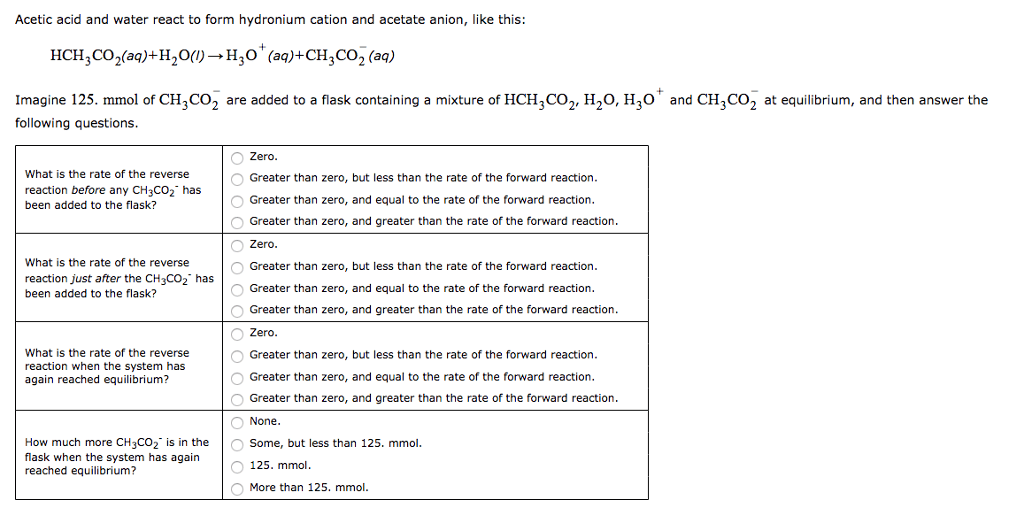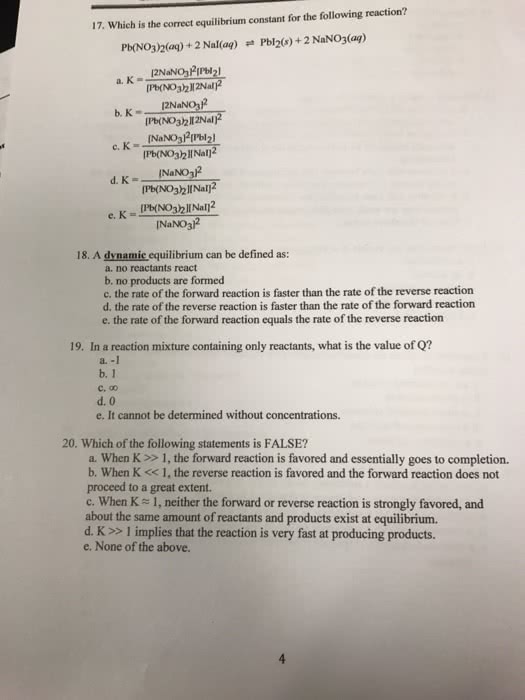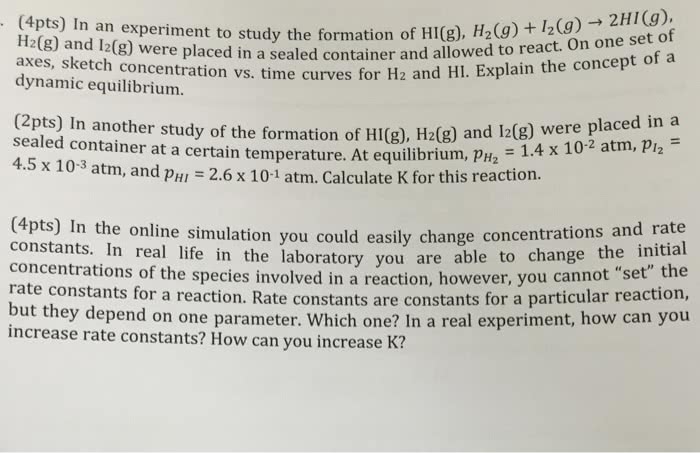CHY 103 Chapter Notes - Chapter 143: Intermolecular Force, Reaction Quotient, North American Racing Team
Document Summary
If the reaction occurs in the gas phase, the more appropriate way to write the equilibrium would be write the equation as pressures: (cid:1837)(cid:3030)=[(cid:1829)](cid:3030)[(cid:1830)](cid:3031) [(cid:1827)](cid:3028)[(cid:1828)](cid:3029) (cid:884)(cid:1840)(cid:2870)(cid:1841)(cid:2873) (cid:886)(cid:1840)(cid:1841)(cid:2870)(cid:4666)(cid:1859)(cid:4667)+(cid:1841)(cid:2870)(cid:4666)(cid:1859)(cid:4667) (cid:1837)(cid:3017)=(cid:4666)(cid:1842)(cid:3015)(cid:3016)2(cid:4667)(cid:2872)(cid:1842)(cid:3016)2 (cid:4666)(cid:1842)(cid:3015)2(cid:3016)5(cid:4667)(cid:2870: the coefficients become the exponents in the expression. Can relate partial pressure of a to the ideal gas law: If we consider the following the equilibrium equation: We can relate to the first equation by substituting [a]: a relationship can be derived from this if the gases behave ideally. It is possible to represent the equilibrium constants in terms of pressures or concentrations and the two can be related to one another. Relating (cid:1837)(cid:3043) and (cid:1837)(cid:3030: the concentration of an ideal gas is the number of moles of a ((cid:1866)(cid:3002)) divided by its volume ((cid:1848)) in litres: We can rewrite the equilibrium constant (cid:1837)(cid:3030) as follows: (cid:1837)(cid:3030)=[(cid:1829)](cid:3030)[(cid:1830)](cid:3031) Substituting the equation of [(cid:1827)]=(cid:3017) into each concentration term in (cid:1837)(cid:3030):





